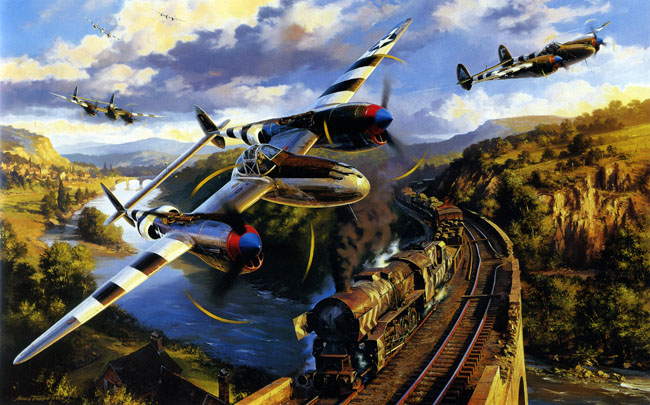by Nicholas Trudgian
P-38 Lightnings launch a surprise attack on a German freight train as it winds it's way
through the hills of Northern France towards the battle front, shortly after D-Day 1944

As a memorial to Ernie's WWII experiences, this print was acquired and framed with the two plaques below
|
Dressed
in their black and white
D-Day invasion stripes, P–38 Lightnings of the 370th Fighter
Group
launch an attack on a German freight train as it crosses a viaduct
damaged by resistance
fighters on its way through the hills of Northern France towards One of
the primary tasks of the ground
attack Fighter Groups of the IX Air Force was to impede supplies
heading for
the |
Major
General (then Lieutenant
and Captain) Ernest T. Cragg was a pilot, flight commander and
assistant
operations officer of the 401st fighter bomber squadron in
the 370th fighter group. He completed 76 combat missions, totaling 175
flying
hours in P–38
and P–51 aircraft. He flew two P–38 combat missions on D-Day over the Like many veterans, he did not talk much about the war in the years following. The only war story he ever told his sons was to describe the spectacular explosion and geyser that would occur when the Lightning’s 20mm canon rounds hit a locomotive under full steam |